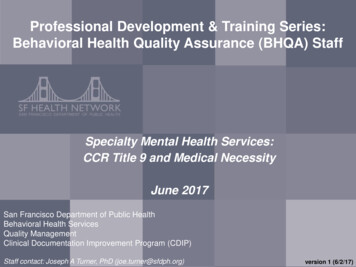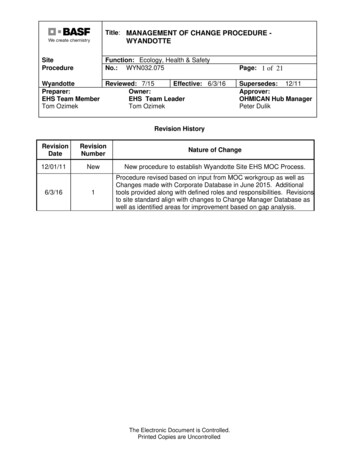
Transcription
Title: MANAGEMENT OF CHANGE PROCEDURE -WYANDOTTESiteProcedureFunction: Ecology, Health & SafetyNo.: WYN032.075WyandotteReviewed: 7/15Effective: 6/3/16Preparer:Owner:EHS Team MemberEHS Team LeaderTom OzimekTom OzimekPage: 1 of 21Supersedes: 12/11Approver:OHMICAN Hub ManagerPeter DulikRevision HistoryRevisionDateRevisionNumberNature of Change12/01/11NewNew procedure to establish Wyandotte Site EHS MOC Process.1Procedure revised based on input from MOC workgroup as well asChanges made with Corporate Database in June 2015. Additionaltools provided along with defined roles and responsibilities. Revisionsto site standard align with changes to Change Manager Database aswell as identified areas for improvement based on gap analysis.6/3/16The Electronic Document is Controlled.Printed Copies are Uncontrolled.
Title: MANAGEMENT OF CHANGE PROCEDURE- WYANDOTTESiteProcedureFunction: Ecology, Health & SafetyNo.: WYN032.075Page: 2 of 21WyandotteReviewed: 7/15Supersedes:Effective: 6/3/1612/111.PURPOSEThe Management of Change (MOC) system is intended to ensure that the safety, health,and environmental impact of all modifications to processes, equipment, chemicals, 3.1.tothe implementation of the change.2.SCOPEThis procedure applies to all changes as defined in Section 3.0 undertaken at theWyandotte Site.3.DEFINITIONS3.1.Change – A change in the technology of manufacturing, chemicals, and processequipment, or a change in the procedures of operating the process and relatedequipment, or in the organization of the department that can affect safety, theenvironment, quality, or efficiency. This definition applies to manufacturing andpilot plant operations, as well as application and research laboratories. Examplesof changes are:3.1.1 Chemical/Technology changes – include modification of operatingconditions to outside of predefined safe operating limits, alarm or interlock setpoint revisions, PLC software revisions, interlock logic revisions, introduction ofnew chemicals, chemical substitution, and chemical re-introduction.3.1.2 Equipment changes – include new piping/equipment, pipingrearrangements, and equipment revisions, new materials of construction, ordesign parameters, impairment of fire water systems, impairment of alarmsystems.3.1.3 Procedural changes – include standard operating procedures, emergencyprocedures, safe work procedures, temporary operating procedures,maintenance/inspection procedures, temporary operating procedures,maintenance/inspection procedures or development of a new procedure for newequipment installations.Note that for changes that are procedural clarifications, formatting and/orprocedure grammar corrections ONLY, each unit can optionally use a documentcontrol method of their choice to review and track these changes. Further, at thediscretion of the Unit Production Manager, for Mandatory Use OperatingProcedures, where personnel must use a procedure and initial each step uponcompletion, a document control method of the unit’s choice may be used whenchanges do not involve adding new steps that an operator nor any otheremployee expected to use the procedure would need training on (essentially, theoperator/employee has already been trained and is competent in all aspects ofthe procedure requirements). Changes to these procedures are still subject to aThe Electronic Document is Controlled.Printed Copies are Uncontrolled.
Title: MANAGEMENT OF CHANGE PROCEDURE- WYANDOTTESiteProcedureFunction: Ecology, Health & SafetyNo.: WYN032.075Page: 3 of 21WyandotteReviewed: 7/15Supersedes:Effective: 6/3/1612/11hazard review, should be approved by management, and should comply withregulatory requirements.3.1.4Personnel/Organizational changes – include a change in the number ofpeople, structure of an organization, development of a new role in anorganization, instrument/electrical or maintenance support, or contractorfor the site or unit, and absence from job for extended period.Organizational changes should also include a transition plan whereappropriate.3.1.5Temporary change – planned for a limited duration; such as, a trial orevaluation or by-pass of a safety system for maintenance. Plannedoperation of a process outside its normal operating range or transfer of aproduct from its normal process train to another.3.1.6Emergency change – immediate actions used to avoid; or control aspontaneous emergency situation.3.1.7Facility change – includes buildings, utilities, containers,process/emergency equipment location and other non-production relatedareas.3.1.8Replacement-in-kind – an item, equipment, chemical, procedure etc. thatmeets the design specification of the item it is replacing. Management ofChange is not required. Examples are: Equipment (vessels, agitators, heat exchangers, etc.) fabricatedexactly to the original design and specification or existing approveddesign and located in the same position as the original. Equipment and materials that are manufactured by an approvedsupplier to a standard specification, such as bolts, gaskets, flanges,steam traps, piping, insulation, structural steel. Instrumentation (transmitters, pressure and temperature gages, etc.) ofthe same specification and range, and purchased from an approvedsupplier. A change in instrument type e.g. RTD to thermo-couple doesnot constitute a replacement in kind. Electric motors, fuses and circuit breakers of the same specificationfrom an approved supplier. Replacement of piping with the same size, material, flange make-upand routing as the existing.The Electronic Document is Controlled.Printed Copies are Uncontrolled.
Title: MANAGEMENT OF CHANGE PROCEDURE- WYANDOTTESiteProcedureFunction: Ecology, Health & SafetyNo.: WYN032.075Page: 4 of 21WyandotteReviewed: 7/15Supersedes:3.1.9Effective: 6/3/1612/11Batch Plant Operations change – re-configuring a process to produce adifferent product does not require an MOC provided that: The different product has previously been produced in the recent pastand the process for that product has undergone an EHS review suchas a PHA or PSSR and maintains the basis of safety for that process.The re-configuration does not introduce new raw materials.The Standard Operation Procedure and training is in place for how tomanufacture the different product.A Standard Operating Procedure is in place, including appropriatedocumentation requirements, to outline the steps necessary torearrange the equipment to produce the different product.3.1.10 Procurement Initiated Changes - Covered changes that will affect specificunits or will have site wide implications must follow Change Managementprocedures. This includes changes in suppliers, raw materials(specifications, concentrations, etc.), equipment specification changes(materials of construction, pump seal type changes, pressure/electricalratings differences, etc.), modes of delivery, etc. The ProcurementDepartment is responsible for communicating the change with the affectedunit(s) prior to the change being implemented. Where appropriate, theaffected unit(s) is responsible for entering a MOC into change manager.3.2Change Administrator - Person responsible to close out the change and ensurechanges meet requirements. The individual assigned to a particular change,responsible for coordinating all aspects of the change. The Change Coordinatorensures that each component of the MOC and PSSR is adequately addressed,maintains appropriate documentation, obtains necessary approvals and trainingsign-offs prior to the change, and tracks all related action items to completion. TheChange Coordinator is also responsible for ensuring that the startup date and timeare accurate and that affected employees are notified upon actual startup (andtermination if temporary) of the change. Change Coordinators must beknowledgeable in the requirements of this procedure, WYN032.075.Normally, an engineer, can be EHS or other. Identified in the Unit Setup Should be the person that oversees the MOC program. This person can see the “Close” out button in Tab 93.3Change Coordinator - Person who is assigned to manage the change.The Electronic Document is Controlled.Printed Copies are Uncontrolled.
Title: MANAGEMENT OF CHANGE PROCEDURE- WYANDOTTESiteProcedureFunction: Ecology, Health & SafetyNo.: WYN032.075Page: 5 of 21WyandotteReviewed: 7/15Supersedes: Effective: 6/3/1612/11The program will initially add the person who initiates the change asChange CoordinatorCan be changed on TAB 1 or TAB 2 in pop up box when the UnitApprover approves.3.4Change initiator/Requestor - Person who fills out Tab 1 and submits the changerequest. Normally, a person already assigned a task by unit manager.3.5Change Unit Approver - Person the change request is sent to for approval toproceed with the change request. Normally Unit Manager.3.6Formal Safety Review – The process of conducting a formal Step Review for thepurposes of identifying a proposed change is safe to operate according to BASFprocedures and processes.3.7Informal Safety Review – An informal safety review may constitute any of thefollowing processes: a Step Review not mandated by BASF Corporaterequirements based on project dollar value, a key word checklist review, a PHA orother unit procedure used to ensure a proposed change can be safelyimplemented.3.8Pre-Start Up Safety Review (PSSR) – Formal process for reviewing thereadiness to operate safely for an installed change.3.9PSM – Process Safety management – Standard defines requirements for highlyhazardous chemicals for preventing or minimizing the consequences ofcatastrophic releases of toxic, reactive, flammable, or explosive chemicals.OSHA’s 29 CFR 1910.119 was developed to minimize the effects of processincidents on employees.The Electronic Document is Controlled.Printed Copies are Uncontrolled.
Title: MANAGEMENT OF CHANGE PROCEDURE- WYANDOTTESiteProcedureFunction: Ecology, Health & SafetyNo.: WYN032.075Page: 6 of 21WyandotteReviewed: 7/15Supersedes:4.Effective: 6/3/1612/11PROCEDURE4.1.The Lotus Notes Change Manager database shall be used to review anddocument all changes and PSSRs defined under 3.1 (See Exceptions under 5.3).4.2.The approval process for changes must be followed and documented using theChange Manager DB.4.3.Exceptions:4.3.1. Emergency type changes can be verbally authorized (approved) bysupervision and then, documented, reviewed and formally approved afterthe situation has stabilized. An “Emergency Change” form is available andcan be printed out from the Change Manager DB by accessing thedatabase and clicking on “?” Help In the menu bar.4.3.2. Replacement-in-Kind4.3.3. A minor change is made to a Standard or Procedure that does not affectthe contents (i.e. updates to phone numbers).4.3.4. A Batch Operation as meets the provisions outlined in 3.1.94.3.5. Temporary Fire System Impairment, lasting less than 24-hours, can bedocumented and communicated by contacting the Site Utilities Group priorto the impairment.4.4 Wyandotte CARES Management of Change ProcedureThe Wyandotte CARES group has established a process to determine whether ornot a potential change needs to be entered into Change Manager. If an MOC isrequired the necessary supplemental PSSR checklists appear on subsequenttables. If an MOC is applicable then the Change Requestor will enter an MOCinto the Change Manager (CM) system and submit to the unit approver. At thispoint the Wyandotte MOC process will be followed.4.5 MOC ORIGINATION: INITIATING A CHANGEAny person can initiate or recommend that a change be made. Minimalinformation, specifically, a description of the proposed change, the technical basisof the proposed change, expected impact on the safety and health of theemployees affected by the proposed change, and the duration of the changeshould be provided. Any change will require completion of Tab 1, the “Definition”section of the Management of Change Form.The Electronic Document is Controlled.Printed Copies are Uncontrolled.
Title: MANAGEMENT OF CHANGE PROCEDURE- WYANDOTTESiteProcedureFunction: Ecology, Health & SafetyNo.: WYN032.075Page: 7 of 21WyandotteReviewed: 7/15Supersedes:Effective: 6/3/1612/114.5.1MOC INITIATION, APPROVAL TO PROCEED AND RISK ASSESSMENT(TABS 1, 2, &3)4.5.2The MOC Initiator and the Change Coordinator are responsible forimplementing the entire MOC procedure. The Initiator or ChangeCoordinator evaluates the proposed change and identifies information thatmust be collected for the particular change.4.5.3Initiator assigns the Change Coordinator (can be the MOC Initiator) anddescribes the change; the justification for the change, if temporary sets theexpiration date and submits the MOC to the Approver (Tab 1).4.5.4The Approver determines the level of review required for the MOC and ifnecessary assigns the appropriate personnel to conduct and participate inthe review (Tab 2).4.5.5The EHS reviewers are assigned at this point. All MOC’s should have theIndividual Approvers radio button marked “YES”. This will automaticallypopulate the EHS reviewers in the reviewers table.4.5.6To help determine if an air permit is needed or an existing permit must beamended because of a change in the unit an Environmental ChangeChecklist has been developed (See Attachment A). The completed formshould be attached to the MOC.4.5.7To assist with the evaluation for addition and use of new chemical a NewChemical Environmental Review Instructions and Environmental ReviewForm have been developed (See Attachment B). The completed reviewforms should be attached to the MOC.4.6 Initial Review Capital and Non-Capital ProjectsA Management of Change (MOC) is required to be completed for all capitalprojects. For non-capital projects, it should also be determined in the initial review,based on the impact of the change, whether additional technical or specializedreviews (HAZOP, Environmental, Occupational Safety and Industrial Hygiene,Legal, Customer Notification, etc.) are necessary to evaluate the feasibility of theproposed change.4.6.14.6.24.6.3The following information should be evaluated during the Initial Review:Technical feasibility of the proposed changeJustification and necessity of the changeThe Electronic Document is Controlled.Printed Copies are Uncontrolled.
Title: MANAGEMENT OF CHANGE PROCEDURE- WYANDOTTESiteProcedureFunction: Ecology, Health & SafetyNo.: WYN032.075Page: 8 of 21WyandotteReviewed: 7/15Supersedes:4.6.44.6.54.6.74.6.84.6.9Effective: 6/3/1612/11Adequate design information/specifications to perform a valid review(based on group judgment and knowledge of the process).Whether modifications to written procedures are required (including timelimit for temporary changes).The expected duration of the change for temporary changes.Review of relevant Process Hazard Analysis (PHA) to verify proposedchange does not violate existing safeguards or create a potential hazard.A risk level assessment is used to determine the potential impact of thechange on safety and health. A risk assessment is used for all MOC’sincluding capital projects. This is done in the Change Manger DB, Tab 3Risk, where the appropriate assessment method can be selected.4.6.10 Documentation of the Initial Review should be maintained with the MOC. Ifa formal meeting is held, minutes from this meeting can document thetopics discussed, the decisions reached and the names of the reviewers(Tab 2).4.6.11 The Approver then either “Approves” to proceed with the change, “Denies”the change, or puts the change on “Hold” due to a concern. If theApprover has a concern the “Concern Page” is completed detailing theconcern and responsible person is assigned. If the concern is satisfied theApprover approves to proceed. At this time the Approver can change theMOC Coordinator if necessary (Tab 2).4.7 Risk Level Determination Tab 3 – Risk Assessment - Risk Method: EitherMode of Failure or PHA/Step Review/Other is now required on Tab 3 (risk levelassessment must also be selected). On tab 3, we must complete the risk levelassessment and mode of failure if no other safety review is performed (e.g., StepReview, R&D Safety Review, etc.) As required per PSM/RMP regulations and BASF Responsible CareRequirements, MOCs must contain a review of the impact to safety andhealth. The risk level assessment is only an assessment of the level of risk, and isnot the safety review. A safety review must document the impact to safetyand health and needed safeguards.The Electronic Document is Controlled.Printed Copies are Uncontrolled.
Title: MANAGEMENT OF CHANGE PROCEDURE- WYANDOTTESiteProcedureFunction: Ecology, Health & SafetyNo.: WYN032.075Page: 9 of 21WyandotteReviewed: 7/15Supersedes:Effective: 6/3/1612/11Risk Level AssessmentRisk Level Assessment - Is a list of questions that will determine the minimum safety reviewsneeded for this change.After all questions are answered, the “View Risk Matrix” button above the section willshow the required level of safety reviews.Informal Review – A hazard review that may be done with two or more individuals and involvesa review of the hazards and documentation of them via the mode of failure method or by addingthem to the PHA at a minimumFormal Initial Hazard Review – A hazard review that follows the same guidelines as a ProcessHazard Analysis (PHA) or BASF capital project review. All capital projects should have aformal hazard review regardless of the Risk Level as per BASF Corporate procedure.If this is a capital project, then the step review process may be followed inThe Electronic Document is Controlled.Printed Copies are Uncontrolled.
Title: MANAGEMENT OF CHANGE PROCEDURE- WYANDOTTESiteProcedureFunction: Ecology, Health & SafetyNo.: WYN032.075Page: 10 of 21WyandotteReviewed: 7/15Supersedes:Effective: 6/3/1612/11lieu of doing the mode of failure method/formal PHA. However, any supportinghazard/safety review documentation should be attached in Tab 3, including the meetingminutes for capital projects and open action items should be documented in Tab 4.Mode of Failure What-If type safety review Describe the potential mode of failure Describe the hazard to personnel Determine if control measures are existing or needed. If needed, create an action item in Tab 4.Under Mode of Failure a risk level of assessment must be assigned. See guidance below:Upon completion of the Risk Assessment Tab a Pre-Start Up Safety Review (PSSR) must becompeted as follows: Tab 3 risk levels 1 & 2 PSSR Short FormTab 3 risk levels 3 & 4 PSSR Long FormComplete tab 4 of the MOC (PSSR Checklist & Action Items).If you answered yes to any of the questions under the Items to Complete Prior to Startupsection:The Electronic Document is Controlled.Printed Copies are Uncontrolled.
Title: MANAGEMENT OF CHANGE PROCEDURE- WYANDOTTESiteProcedureFunction: Ecology, Health & SafetyNo.: WYN032.075Page: 11 of 21WyandotteReviewed: 7/15Supersedes: Effective: 6/3/1612/11For each yes answer, complete the required categories.Identify your change under the Short Form Change Type, and complete therequired categories.Tab 3 – Risk Assessment - Also due to the same PSM/RMP requirements, the box at the bottom,“Reviewers for Impact on Safety and Health” is now a required field.The field is now red with a double (**) asterisk, indicating it is a required fieldThis change was the result of Internal PSM/RMP/RC compliance audit findings which have beenwritten in regards to the impacts to safety and health not being addressed prior to a change.Therefore, these updates to change manager will promote compliance.Administrative ChangesFor Administrative Changes or When there are no anticipated Failure Modes (NegativeDeclaration)4.8 MOC CHECKLIST (TAB 4)4.8.1All questions in the Pre-Startup and Post Startup sections will be answeredYES or NO. Addition Action Items can be added.4.8.2YES answers will be assigned as an Action Item. Final Approval forstartup cannot be submitted until the Pre-Startup Action Items arecomplete. All Pre-Startup Action Items shall be completed prior to startupof the change.The Electronic Document is Controlled.Printed Copies are Uncontrolled.
Title: MANAGEMENT OF CHANGE PROCEDURE- WYANDOTTESiteProcedureFunction: Ecology, Health & SafetyNo.: WYN032.075Page: 12 of 21WyandotteReviewed: 7/15Supersedes:Effective: 6/3/1612/114.9 MOC TRAINING (TAB 5)4.9.1Training documentation is automatically maintained in the Lotus NotesChange Manager system when the electronic signoff feature of the ChangeManager system is used.4.9.2In the event that another means of training is used, evidence that thoseaffected by the change have been informed/trained MUST be maintained.A sign-up sheet may be used and attached on the MOC Training Page.4.9.3NOTE: All signatures do NOT have to be signed off in order to start up.Sign-off prior to startup may not be possible due to shift schedules.Employees are required to be informed/trained and signed off beforeoperating or working on equipment or processes that have been changed.Within the Lotus Notes MOC DatabaseTab 5 - Training - Language has been reworded as requested by several sites and operationspersonnel. It now allows them to acknowledge that they were either informed OR trained on thechange.Reminder: Sites must makes sure they train and/or inform as appropriate depending on thechange and the impact it has to an individual’s job task.4.10 PSSR PRE-STARTUP SAFETY REVIEW (TAB 6)The PSSR team should review the status of any action items/open issues from theMOC, Step 3, PHA, or EHS reviews with the team. In addition, the status of PSSRaction items should be reviewed.4.3.6. A PSSR must be completed or waived before approval is given to startup achange.4.3.7. PSSR procedure and the Long Form Pre-Startup Project Safety ReviewChecklists can be found in Appendix D of this procedure.4.11 MOC APPROVAL TO STARTUP (TAB 7)Approval to startup must be obtained from the Unit/Department approver beforethe change can be implemented. In addition, the Final Approver can requireadditional approvers as necessary.4.11.1 Determine the start-up approvers required for the change and send arequest for approval to the personnel specified.The Electronic Document is Controlled.Printed Copies are Uncontrolled.
Title: MANAGEMENT OF CHANGE PROCEDURE- WYANDOTTESiteProcedureFunction: Ecology, Health & SafetyNo.: WYN032.075Page: 13 of 21WyandotteReviewed: 7/15Supersedes:Effective: 6/3/1612/114.11.2 All Pre-Startup Action Items must be completed before the request forstart-up approval can be submitted.4.12 MOC TEMPORARY CHANGE (TAB 8)Temporary changes must follow the full management of change procedure. If achange is "Temporary", the duration of the change shall not exceed 90 dayswithout additional review. Temporary change must follow one of the followingthree completion options:4.12.1 “Change Removed” – all affected personnel notified by email or otherappropriate means.4.12.2 “Extend expiration date” - all affected personnel notified by email, or otherappropriate means, of the new expiration date.4.12.3 “Make Permanent” - A new Change will be created & certain informationcopied into the new document.4.13 MOC CLOSE-OUTAfter approval is obtained to startup the change, the Change Coordinator or otherdesignated person will sign off the change as complete.4.14 TRAININGIs required:4.14.1Initially when employee is assigned responsibilities for recognizingchanges, including a General MOC awareness in Success Factors.4.14.2Both site and unit specific training is required to ensure allemployee understand the MOC process within their respectivegroups.4.14.3Whenever changes are made to the standard,4.14.4Whenever deviations to the requirements are identified.4.14.5Additional training materials are available in Change Manager byselecting the on “?” “Help” button and choosing links titled “Link toTraining Materials on Change Manager” and “Frequently AskedQuestions”. The online help section for Change Manager is a goodresource for questions concerning the Lotus Notes ChangeManager database.Note: Additional training material is also available through the WyandotteEHS group that will utilize site training material in addition to what isprovided in the Change Manager Help section.4.14.6Training should incorporate both the requirements of this procedureas well as any unit specific requirements above and beyond thoselisted in this standard.The Electronic Document is Controlled.Printed Copies are Uncontrolled.
Title: MANAGEMENT OF CHANGE PROCEDURE- WYANDOTTESiteProcedureFunction: Ecology, Health & SafetyNo.: WYN032.075Page: 14 of 21WyandotteReviewed: 7/15Supersedes:4.14.75.Effective: 6/3/1612/11Operating/Lab Units are responsible for ensuring training ofpersonnel is completed as required.RESPONSIBILITIES5.1.All employees have the responsibility to:5.1.1. Recognize a change before initiating5.1.2. Initiate the MOC, per this policy5.1.3. Assist in making changes5.1.4. Participate in training5.1.5. Provide input in maintaining a safe working environment5.2.Change Requestor/ Initiator- has the responsibility to:5.2.1. Initiate the MOC and PSSR by defining the change and reason for thechange5.2.2. Assigns Change Coordinator and PSSR Coordinator (can be therequestor)5.2.3. Forwards to the appropriate person (Operations Manager, Site Manager ordesignee) for approval to proceed5.2.4. Documents the technical basis on Tab 1 and as necessary participates inTechnical Review if required5.2.5. May assist with the completion of the hazards analyses or risk assessment5.2.6. As appropriate may participate in PSSR5.2.7. May assist Change Coordinator with the completion of the pre and poststart-up safety review checklists’ items and assigns action items5.3.Operations/ Service Manager/Change Unit Approver - has the overallresponsibility to:5.3.1. Approves the initial request of the change, helps identify is customernotification is required and specifies if and what technical approval isnecessary.5.3.2. Solicit employees participation by getting their input on changes5.3.3. Determines if Technical Review is required and assigns TechnicalReviewers.5.3.4. Ensure all items on the MOC and PSSR checklists have been completedas required, prior to implementation of the change5.3.5. Give final approval to implement the change5.3.6. Ensure affected personnel are trained in the MOC requirements andchangesThe Electronic Document is Controlled.Printed Copies are Uncontrolled.
Title: MANAGEMENT OF CHANGE PROCEDURE- WYANDOTTESiteProcedureFunction: Ecology, Health & SafetyNo.: WYN032.075Page: 15 of 21WyandotteReviewed: 7/15Supersedes:Effective: 6/3/1612/115.4.MOC Coordinator - has the responsibility to:5.4.1. The individual with overall responsibility for coordinating all aspects of thechange, implementing the change and ensuring compliance is met withWYN032.075 when making changes.5.4.2. Receives appropriate approvals on Tabs 2 and 7 prior to the change andassigns and tracks all related action items to completion.5.4.3. Fills out the Risk Assessment (with other personnel as necessary) andassembles the required team for the appropriate Hazard Review accordingto the Risk Level.5.4.4. Ensure the appropriate personnel (including the Production Engineer forthe area) are on the distribution list for the MOC in Tab 2.5.4.5. Ensures EHS review and approval personnel are identified in tab 2.5.4.6. Where appropriate consults with the Learning and Developmental (LDC)Coordinator about the change so that the LDC knows how to understandtheir role in the training process. As needed an action item in Tab 4 for theLDC to work on any training that may be identified as an action item.5.4.7 Responsible for organizing the Pre-Start up Safety Review (PSSR) prior tostartup and documenting the PSSR on Tab 6 as identified during theHazard review.5.4.8 Ensures that the startup date and time are accurate on Tab 6 (may need toadjust to reflect accurate time following final approval) and that affectedemployees are notified upon the actual start up (and termination if atemporary change). This should also be checked before submitting theMOC to the final approver.5.4.9 Tracks temporary changes to ensure the expiration dates are met or theMOC is altered as appropriate.5.4.10 For groups that do not have an LDC, the Change Coordinator isresponsible for filling out the Training Tab (Tab 5) of the Change ManagerMOC and should follow the same requirements as an LDC outlined in thisprocedure.5.5.MOC Administrator - has the responsibility to:5.5.1. Manage the Operating, Applications and or Research Unit’s overall MOCprogram5.5.2. Establish KPI’s to ensure MOC’s are being initiated, completed and closedin a timely manner.5.5.3 Works with the MOC Coordinator to make sure the MOC is closed out in atimely manner.5.6.Technical Reviewers – have the responsibility to:5.6.1. Review change request and sign (if signature is required) the formacknowledging the review is completed and the change accepted.The Electronic Document is Controlled.Printed Copies are Uncontrolled.
Title: MANAGEMENT OF CHANGE PROCEDURE- WYANDOTTESiteProcedureFunction: Ecology, Health & SafetyNo.: WYN032.075Page: 16 of 21WyandotteReviewed: 7/15Supersedes:Effective: 6/3/1612/115.7EHS Approver- have responsibility to:5.7.1 Reviews the change request in Tab 1 and determines if any significantEHS issues are identified prior to approval.5.7.2 Based on the review approves the change allowing it to move forward.5.8Maintenance Department/EHS Department/OtherHas responsibility for recognizing changes that are covered under WYN032.075and for initiating and completing MOCs for all changes initiated by theirdepartment.5.9Procurement DepartmentHas the responsibility of communicating any change they initiate with the affectedunit(s) to allow them to fully evaluate the change in accordance with thisprocedure prior to this change being implemented.5.10Shift Supervisor5.10.1 Typically fills out Tab 1 when an emergency change occurs (must be filledout within 24 hours after the change) and assigns a Change Coordi
Title: MANAGEMENT OF CHANGE PROCEDURE- WYANDOTTE Site Function: Ecology, Health & Safety Procedure No.: WYN032.075 Page: 4 of 21 Wyandotte Reviewed: 7/15 Effective: 6/3/16 Supersedes: 12/11 The Electronic Document is Controlled. Printed Copies are Uncontrolled. 3.1.9 Batch Plant Operations change - re-configuring a process to produce a different product does not require an MOC provided that:
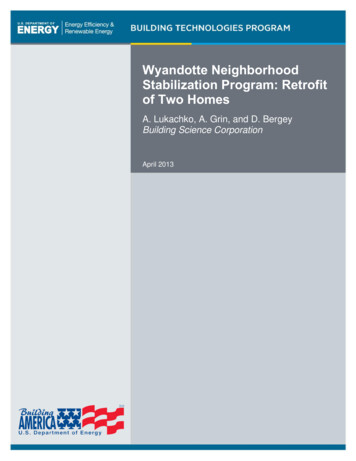
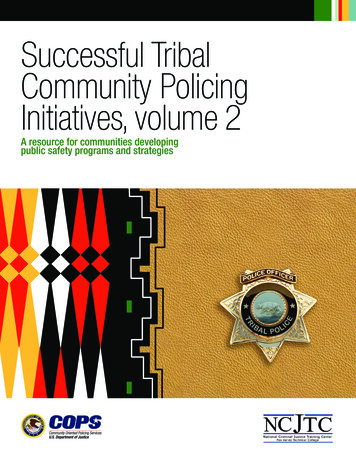
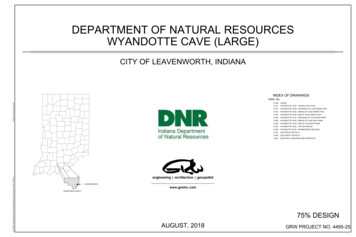
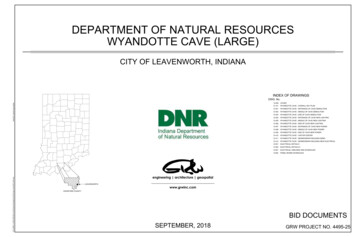
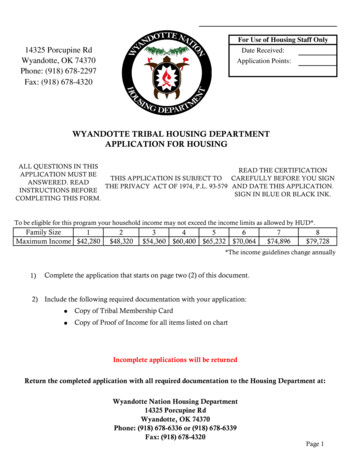
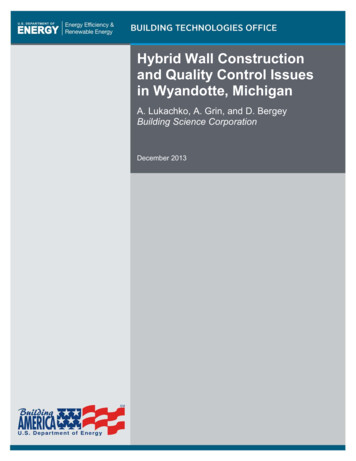
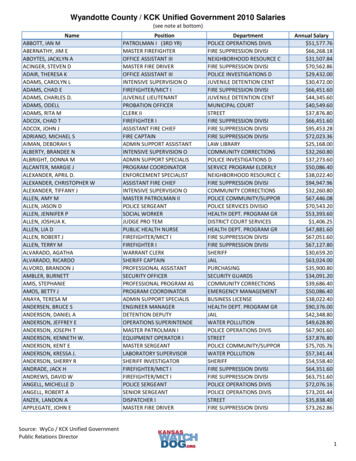
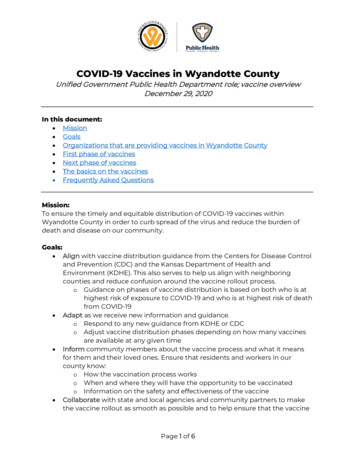
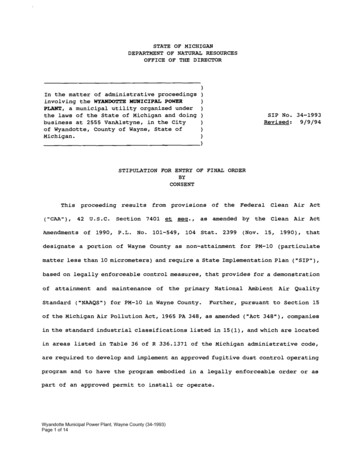
![Change Management Process For [Project Name] - West Virginia](/img/32/change-20management-20process-2003-2022-202012.jpg)
